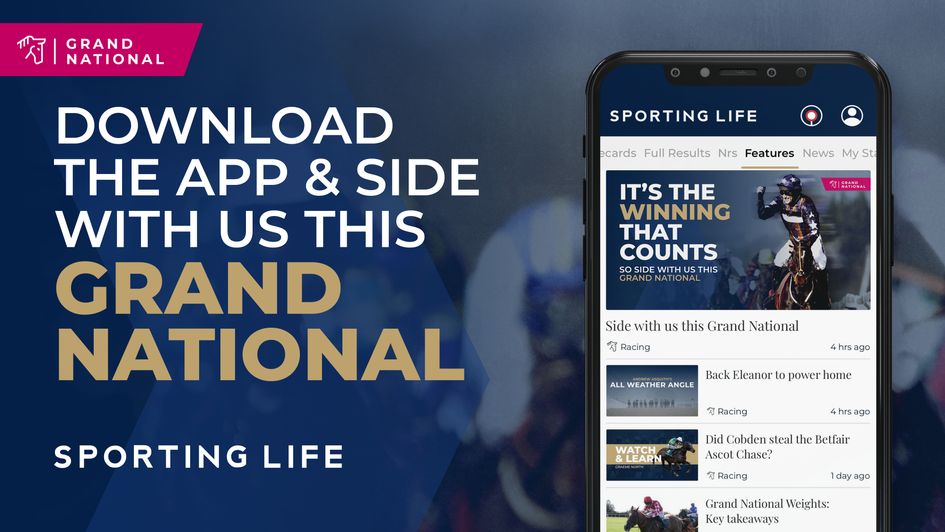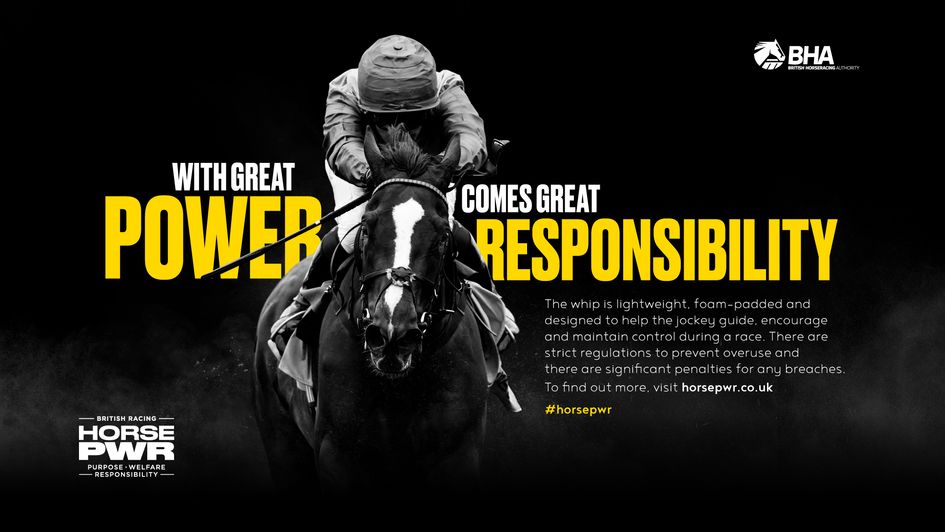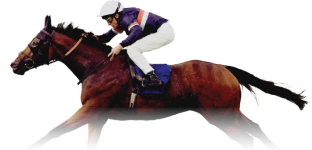He was a shining star in the golden era of the Grand National. David Ord talks to author David Owen about the remarkable L'Escargot.
If you’re of a certain age, you’ll remember the name L’Escargot.
You’ll remember those Grand Nationals of the early 1970s, his win in ‘75 breaking the hearts of a nation but gaining reward for a string of magnificent efforts in the great race.
It was a time when the sport and the National needed heroes – and they found them in Red Rum and the stellar support cast.
But you won’t know the full, remarkable, story of L’Escargot which is told by David Owen in his book, No Snail.
Its sub-title is ‘the story of L’Escargot, the horse that foiled Red Rum’. But he was much, much more than that. So, why did the author decide to hold the spotlight on a remarkable horse and the cast of characters who owned, trained and rode him?
Owen said: “It was mainly because I was very surprised no-one had done it before, and nobody had written a proper book about Tommy Carberry either, as far as I could work out. Then as I was starting the research there are also pretty good human stories too.
“Everyone associated with L’Escargot seemed to have been obsessing about winning the Grand National for decades. It’s not unusual for people in jump racing to want to win it but his owner Raymond Guest had been harbouring this dream for just about half a century and trainer Dan Moore for not much shorter. Even Carberry hadn’t won it before and it was the combination of those things that made me want to tell the story.”
The tale of L’Escargot doesn’t begin and end at Aintree either. Here was a horse who won two Cheltenham Gold Cups, competed across the Atlantic. He danced every dance.
“It’s hard to think of another chaser who was as versatile,” Owen argued. “He was a dual Gold Cup winner which is the other thing people tend to know about him, but he won a hurdle race at the Cheltenham Festival, what is now the Supreme Novices’ in ‘68. He was second favourite behind Persian War for the Champion Hurdle the following year.
“He was a decent hurdler without being right at the top. His owner was a Virginia gentleman with strong European contacts through his wife and diplomatic career, he was one of the great figures of North American steeplechasing.
“Because of that he was very keen for the best jumps horse he ever owned to go over to the United States and race early in his career. He made three trips over there. Steeplechasing is a much faster game in America than in Britain. The ground tends to be firmer and the fences much softer, local horses were used to skimming through the top of them in a way that invites disaster if you tried it in England or Ireland.
“L’Escargot also ran in two Irish Cesarewitches, more as training exercises than anything else, he ran in this incredible mixture of races and while he had his off-days, trainer Dan Moore was canny enough to put him in contests he must have known he had virtually no chance of winning as part of a prepping-up regime for the big ones. He was an extraordinarily versatile racehorse.”
But one living and working beneath two major shadows. One of a recent champion, the like of which we’ve never seen before or since, the other a horse who will be forever the king of Aintree.
“Arkle’s shadow was already apparent even though L’Escargot was running so soon after he was. Arkle’s retirement had been unexpected, people had been thinking there was no reason why he couldn’t go on and emulate Golden Miller by winning five Cheltenham Gold Cups. He might very well have done that had he remained sound.
“Following his retirement there was a whole school of articles asking where is the next Arkle coming from? Just as there was when Pele retired or there will be again when some great sports figure steps down. It’s always about who is going to be the next?
“There was an obvious answer in Britain in Persian War, but it wasn’t quite the same as he was a hurdler and the true answer is there’s never been another Arkle, nothing has quite measured up, have they?
“The horse people mention in the same breath now is Kauto Star, but I still don’t think most would put him quite at Arkle’s level. When L’Escargot was winning his Gold Cups, the shadow was there and it seemed nothing was going to emerge from it.
“Red Rum did – in a different way – via a different route.”
Two incredible Aintree records
And if Ginger McCain’s charge galloped his way into British folklore by recording form figures in the National of 11221, L’Escargot wasn’t too far behind.
Owen said: “He had a full set of places: third, second and first. It’s incredibly unusual for a horse to run in that number of Grand Nationals and continually improve. I know he was more and more favoured in the handicap but how often has that happened?
“On social media people were recently asking for horses who won the Grand National having been previously placed in it. Red Alligator was one but there aren’t many others. It’s very unusual.
“And L’Escargot’s success around there was a great training achievement. The first couple of times he went to Aintree, he absolutely hated it. He was knocked over in his first National in 1972 and they were quite lucky because had there been another race worth a lot of money that it would have been worth preparing the horse for, I’d imagine they might well have given up the idea of going back to Aintree and headed there instead.
“But getting to the latter part of his career the speed races were out of the question and in handicaps he was running the whole time against good horses and trying to give them three stone in weight, so they weren’t great opportunities, he tended to place rather than win them.
“Conditions races were just starting to get going as there was a lot of corporate sponsorship coming into the sport in the early 1970s, but it was only the beginning of those, and it was really only the Grand National for him.
“His owner had been trying to win this race since he watched his father’s horse try and fail to do so in the late 1920s. It was an obsession with him, but he’d had eight, nine, even ten National horses in his career as a steeplechase owner and it wasn’t like it immediately occurred to him that L’Escargot would be the horse that would succeed for him where all the others previously had failed.
“I think it was Dan Moore who cottoned onto the idea that he was in fact the Aintree horse they’d all been waiting for. After the disaster of ‘72 when he was knocked over, the following season, for the first time in years, there was an autumn meeting at Aintree.
“It had been discontinued for a few years but L’Escargot was given the opportunity to run over the big fences again that he wouldn’t have had in any other year. He could go into a relatively low-key race over the National fences at Aintree with a much smaller field against him, only about a dozen rivals, take his time, work out what the place was all about, have a nice gentle roll around and hopefully have nothing untoward happen to him.
“And that’s exactly what happened. He finished second behind a Ginger McCain-trained horse called Glenkiln who also ran in the Red Rum colours, and while you wouldn’t say Aintree ever became his favourite place to run, that seemed to be Cheltenham, he became attuned to the idea he could do this. And they, his connections, knew he could jump the fences.
“What they didn’t know was his stamina for the National, he’d never run beyond three-and-a-half miles. They hoped he’d get the trip but didn’t know for sure until the second time he ran in the National.
“That was the epic 1973 renewal with Red Rum and Crisp. Having watched the video several times knowing the situation, I would contend that had they known he would get the trip and therefore raced him more aggressively, he’d have been closer to the first two in third than he was on the day.
“He made up a massive amount of ground between the Canal Turn on the second circuit and the winning post. He was in about 11th place at the fence and finished probably as strongly as Red Rum did, but from much further back.”
Glory at fourth and final attempt
In 1974 he finished second to Red Rum – looking a huge threat going to the second last only to see his rival go clear again under Brian Fletcher.
12 months later they were back to clash again at a time when even bigger Grand National battles were raging off the course.
“This sort of psychodrama over Aintree had been going on for years. I can just about remember those days and you were never quite sure whether the latest Grand National was indeed going to be the last one,” Owen remembers.
“That sort of died down a bit in the very early 1970s, probably helped a bit by Red Rum, the local horse winning in 1973, but then suddenly it all stirred up again. Mirabel Topham finally disappeared from the scene and what emerged from there, almost from left-field, turned out to be this rather short-term solution with Bill Davies the property developer.
“The 1975 race when L’Escargot beat Red Rum was the second one of this era, he’d just about taken control in 1974, and Davies had seemingly decided what he wanted to do with the race, or the property more importantly to him, and it became clear it would involve quite a lot of development.
“And also new races, money coming in from the Jockey Club which would have been all well and good, but it was never entirely clear where it was coming from. At one point he was talking about a North Country Derby being run at Aintree for £100,000.
“All of this was swirling over that 1975 National and only a month or so before the race there was another impasse in financial negotiations and suddenly, while it might be exaggerated because of the state of those talks, there were front-page headlines in the newspapers that the National was in danger again. These stories were running four or five days before that 1975 race so it was a continual soap opera over a decade.”
For L’Escargot this renewal was very much a case of drinking in the Last Chance Saloon.
“He was 12 by then. I remember, as a teenager, he was the first horse I crossed off my list for the race. I knew nothing about racing, I didn’t follow it in detail, but like most of the population in those days, come the Grand National you started to take notice.
“To those of us with a superficial knowledge we thought ‘oh he’s 12, he hasn’t raced very much this year, has no form whatsoever’.
“But those better acquainted with the sport knew he was on much better weight terms with Red Rum this time and the only reason to keep him in training was for this Grand National. At his age and with his rating, he wasn’t going to win any other race that year.”
He did this one. Silencing most of a reduced Merseyside crowd as he temporarily derailed Rum Rum’s bid to win the race three times.
The ultimate party-pooper – something L’Escargot had grown accustomed to being throughout his career.
“As I got into the book, this was one of the reasons why I was glad I’d decided to write about L’Escargot,” Owen smiled.
“As I went along there were three or four times in his career, from the very first day, when he was the party-pooper. When he won his very first race, a bumper, the crowd weren’t exactly ecstatic as he was running against a horse who was the latest one off the Dreaper conveyor belt and was sent off a hot favourite and expected to win. L’Escargot spoiled that party as he did when winning his first Gold Cup. Kinloch Brae was supposed to win that; L’Escargot did at 33/1.
“And at Aintree in 1975, he did it again in spades. It was a strange atmosphere at the track. The course had just had its latest reprieve, but another thing Davies decided he could do was jack the admission prices up and while I don’t think the attendance was as low as is often reported, it was probably less than 20,000.
“As you see the early stages of the race unfold on the replays, the banking on the course on the way to Becher’s Brook has very few people on it. It was quite sad. To us now, it’s almost astonishing that an event that, irrespective of who’s running in it, is a feature of the British sporting year had such a crowd.
“Add to that a local horse in Red Rum going for an unprecedented hat-trick against probably another three of the best Grand National horses of all time in L’Escargot, The Dikler and Spanish Steps, they were all there, yet the course was less than half full. It’s very, very strange.
“The economy was terrible, there were all sorts of reasons why people may have chosen not to go but, even so, for a marquee occasion like that it seems a little bit sad.”
L’Escargot deserved more for his moment in the Aintree sun. Imagine the reception nowadays for a dual Gold Cup winner landing the National on his fourth and final attempt having been placed in the previous two renewals?
It’s the stuff of folklore – like so much of this story.
Want to know more about horse welfare within our sport?
“I like writing about horse racing (he also wrote Foinavon: The Story of the Grand National's Biggest Upset), you always find coincidences. You’re looking backwards not forwards. Racing is a sport where everyone is fixated on the near future, the next race. It’s quite fun to see patterns emerging in races as you look back,” Owen added.
“I was sitting in what had been Betty Brogan’s house talking to her daughter and I suddenly realised something about another famous Grand National, the 1938 race that Battleship won. It was an incredibly tight finish, one of the tightest finishes ever to a National. I knew that the unlucky jockey who rode the runner-up Royal Danieli, who was just pipped at the post and as there was no photo finish he went through his life convinced he was robbed, was Dan Moore.
“That’s one of the reasons why as a trainer he wanted to make amends for that at Aintree. But what I hadn’t realised was there was a third horse in the race right up to the end, he dropped out at The Elbow but won the National the following year and was called Workman.
“His jockey was Jimmy Brogan, and he was the guy who bought L’Escargot, more or less out of a field as yearling, and brought him back to his training operation and would almost certainly have trained him, at least in his early years, but tragically died prematurely just a few weeks after the horse had arrived on the property.
“I didn’t know the drama of that Grand National involved the two trainers who worked with L’Escargot throughout his racing career. Bruce Hobbs, the jockey who rode Battleship in 1938, had the presence of mind immediately after the 1975 race to send Dan Moore a telegram saying ‘Sorry you didn’t ride a National winner – but I’m delighted that you trained one’.
“I find that quite satisfying when you dig out little side stories like that and that was nice to come across.”
The whole L’Escargot story is a wonderful read – the subtitle of which could have been ‘the forgotten Aintree legend’.
Some horse. Some story.
No Snail is published by Fairfield Books and available through Amazon
More from Sporting Life
- Racecards
- Fast results
- Full results and free video replays
- Horse racing news
- Horse racing tips
- Horse racing features
- Download our free iOS and Android app
- Football and other sports tips
- Podcasts and video content
Safer gambling
We are committed in our support of safer gambling. Recommended bets are advised to over-18s and we strongly encourage readers to wager only what they can afford to lose.
If you are concerned about your gambling, please call the National Gambling Helpline / GamCare on 0808 8020 133.
Further support and information can be found at begambleaware.org and gamblingtherapy.org











